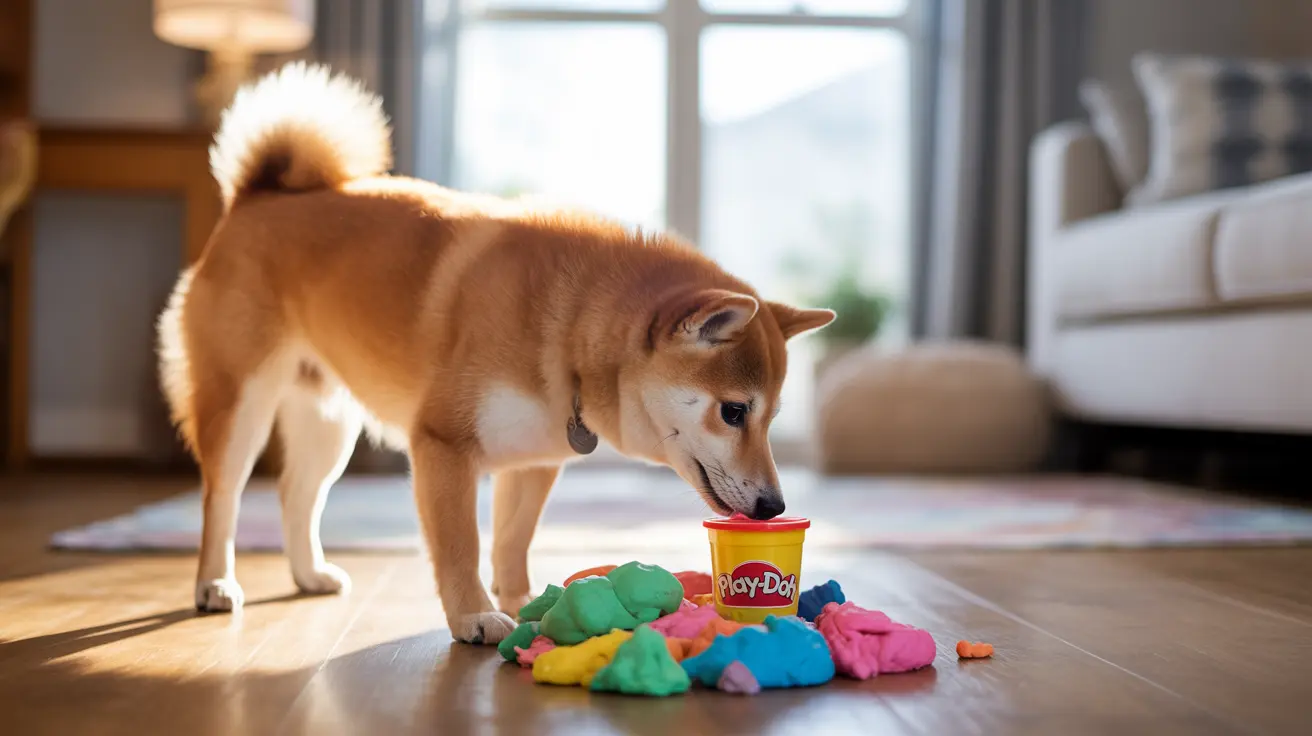Understanding the Dangers of Playdough Ingestion
Commercial Play-Doh and homemade playdough present different levels of risk to your dog. Store-bought Play-Doh contains moderate amounts of salt, while homemade versions often contain dangerous levels of sodium - up to 8 grams per tablespoon. For perspective, even a small amount of homemade playdough can be lethal for a small dog.
The primary concerns include:
- Salt toxicity (hypernatremia)
- Gastrointestinal obstruction
- Severe dehydration
- Potential neurological complications
Immediate Steps to Take
If you discover your dog has eaten Play-Doh, time is of the essence. Follow these critical steps:
- Remove any remaining playdough from your dog's reach
- Note the approximate amount and type of playdough consumed
- Contact your veterinarian or pet poison control immediately
- Do not attempt to induce vomiting at home
- Keep your dog calm and monitor for symptoms
Recognizing Signs of Playdough Poisoning
Watch for these symptoms, which can appear within hours of ingestion:
Early Warning Signs
- Excessive thirst and urination
- Vomiting and diarrhea
- Lethargy
- Loss of appetite
Severe Symptoms
- Tremors or seizures
- Disorientation
- Difficulty walking
- Rapid heart rate
- Severe dehydration
Veterinary Treatment Options
Treatment typically involves:
- Immediate evaluation of blood sodium levels and kidney function
- Controlled induction of vomiting (if appropriate)
- IV fluid therapy to manage dehydration and electrolyte imbalances
- Monitoring for neurological complications
- Possible hospitalization for severe cases
Prevention Strategies
Protect your dog by implementing these safety measures:
- Store all playdough in sealed containers out of reach
- Supervise children when playing with any type of modeling clay
- Clean up thoroughly after craft activities
- Consider pet-safe alternatives for children's play
- Be especially careful with homemade salt dough during holidays
Frequently Asked Questions
What are the symptoms that indicate my dog ate toxic playdough and needs emergency care?
Emergency symptoms include excessive thirst, vomiting, tremors, seizures, disorientation, and difficulty walking. Any of these signs warrant immediate veterinary attention, especially if you know your dog has consumed playdough.
How should I safely respond if my dog eats homemade playdough with high salt content?
Contact your veterinarian immediately and do not induce vomiting at home. Note the amount consumed and ingredients used. Take your dog to an emergency vet clinic right away, as homemade playdough contains dangerous levels of salt.
Can commercial Play-Doh cause salt poisoning in dogs, and how much is dangerous?
Yes, commercial Play-Doh can cause salt poisoning, though it's less concentrated than homemade versions. The toxic dose depends on your dog's size, but generally, 1.9g of playdough per kg of body weight can be dangerous.
Why is it risky to induce vomiting at home if my dog swallows playdough?
Home-induced vomiting can lead to aspiration pneumonia and may cause additional damage due to the sticky, dense nature of playdough. Only a veterinarian should attempt to induce vomiting in a controlled setting.
What treatments do veterinarians provide for dogs affected by playdough ingestion?
Veterinarians typically provide IV fluid therapy, monitor blood electrolytes, manage symptoms, and may induce controlled vomiting if appropriate. Severe cases may require intensive care and hospitalization for several days.
Conclusion
While dogs eating Play-Doh is a serious concern, prompt action and proper veterinary care can lead to positive outcomes. Remember that prevention is always better than treatment - keep all types of playdough safely stored away from your pets, and always supervise children during craft activities involving modeling compounds.
If you suspect your dog has ingested any amount of playdough, don't wait for symptoms to appear - contact your veterinarian immediately. Quick response time can make the difference between a minor incident and a life-threatening emergency.






